The Tin Can
Tagged: bike diy projectAs someone who gets their kicks from dragging bikes out of the garbage, I’m starting to have a problem where I’ve got too many bikes in various states of assembly. It’s currently winter and my basement, closet, and garden shed are all being used to store bike frames and wheels and other parts, while my winterized bike is the only one that sits outside fully assembled.
The only real way to mitigate this problem is to give bikes away.
So that’s what I’ve been trying to do. Get rid of bike parts by assembling them and pushing them on my friends and coworkers.
Last year, a dear friend of mine decided he wanted to try commuting to work by bike. I dragged a (very low quality) red department store bike out of the trash for him, restored it to functional, and he tried out his commute. This bike had 26" mountain bike tires, faulty friction shifting, and it weighed an absolute ton and made terrible noises. The kickstand interfered with the wheels. I’m surprised my friend stuck with commuting on such a terrible machine. He started affectionately referring to it as “The Rust Rocket,” and he actually rode it until the shifting completely stopped working.
Now, if I encountered such a bike in the trash, I wouldn’t even take it home. Now I have standards. And he should too. He deserved a bike with some real components. With the absolute failure called Trug kicking around my back yard, I realized we could probably hack something nice together for him. Trug wouldn’t live on as a mountain bike - it would live on as a regular commuter, with a proper rack and a drivetrain that wouldn’t rattle around and fail to shift.
He came over on a Saturday afternoon so we could perform the conversion together.
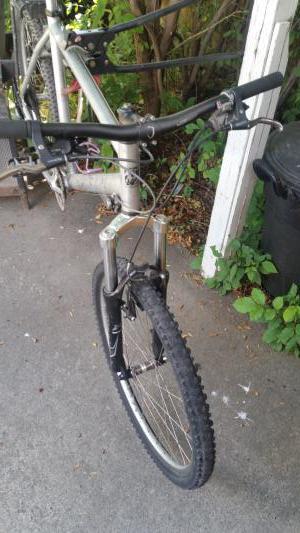
The conversion would be a fairly simple one: We would swap out the fork, stem, and bars, install a better front shifter, and swap the tires out for road slick cruiser bike tires.
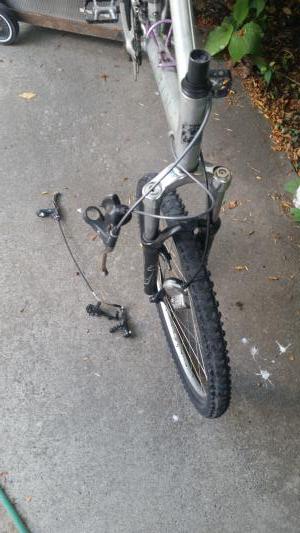

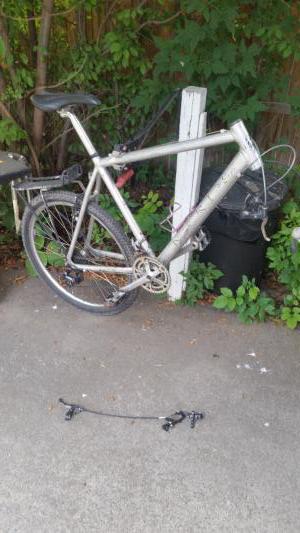
As a sidenote: working on a bike in your backyard on a saturday afternoon with your best friend is something I strongly recommend. Bonus points if it’s a hot day and you have cold drinks. This wasn’t a particularly hot day, but we’ll try again next year.
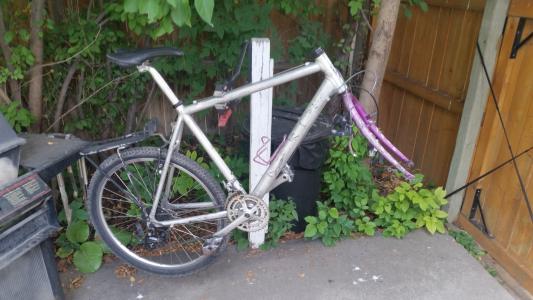
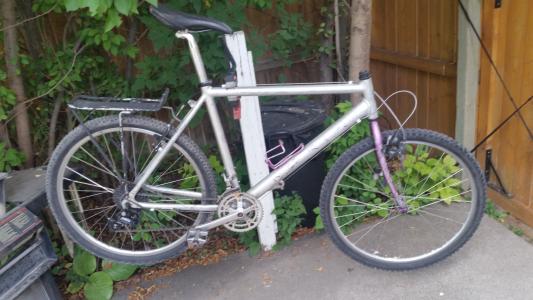
The original fork suited my friend much better - it was colourful and a little bit scuffed. Bikes should be fun.
Sadly, the original stem was in rough shape after all we did to remove it when I was building Trug. Ahh well. It was more suited to old cantilever brakes than our v-brake setup anyways.
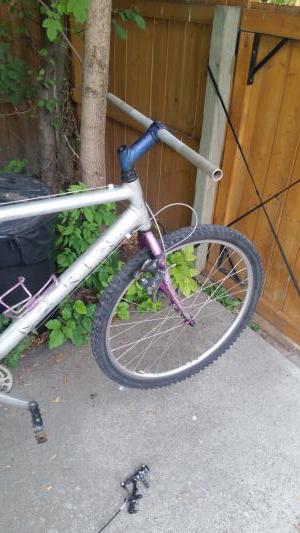
We picked out a colourful stem to complement it, but ultimately we didn’t stick with it. My friend is rather tall, so we opted for a taller, longer quill stem and some riser bars. Just to make the ride a bit more comfortable.
Sadly, I’m very tall, and so are many of my friends. When your sizes aren’t average it makes it that much harder to happen upon parts that fit you well. Thankfully, bikes are adjustable enough that you can usually make something work.

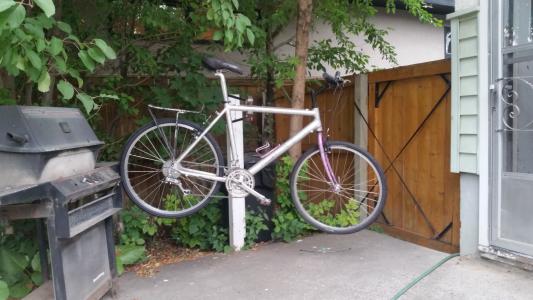
We also swapped out the 26" mountain bike tires out for smooth cruiser tires for better city riding. I don’t think my friend has any intention of trail riding with this thing, he just likes having a commuter and something to ride for fun and exercise.
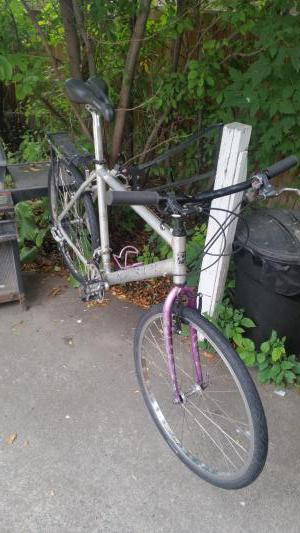
The rear shifter is a little bit old and has no visual gear display, but it was $5 at the bike co-op, and it shifted better than anything else we had, so it’s what we stuck with.
There are two oversights we made with our assembly. First, the handlebar setup was a bit tight. The riser bars had to be tilted forward for the shifters to have enough clearance to actually shift. My friend said he didn’t mind but it bothers me so I’ll probably try to fix it later, either with better shifters or a less aggressive set of riser bars.
Second, I replaced the bottom bracket with a bit of a newer one I had found. I didn’t realize that the new one had a square taper spindle that came out just a little bit further than the old one. When we started fine tuning the shifting, we realized that the front derailleur actually couldn’t go out far enough to reliably shift onto the outer sprocket of the crankset. When spring rolls around, I’ll have to reinstall the old bottom bracket to fix this.
I told my friend that if he wanted the bike to look less scuffed, we could disassemble it, sand down the frame, and repaint it sometime. Eventually, he said no, he didn’t think he wanted to do that. He liked the bare metal look. He started affectionately calling this bike “The Tin Can” because it was bare aluminum, dented, and scuffed all over.
And there you have it - Trug has finally found a home, and a nice one at that. My friend commuted consistently on The Tin Can until winter hit, and now it’s tucked away in his basement until spring.
He rode home happy to have a bike, and I went inside happy to be rid of another bike. I ended up donating the old fork to the bicycle co-op, thus closing the book on this particular build. I still wanted an offroad mountain bike of my own, but that could wait. If you wait long enough, an opportunity always presents itself.